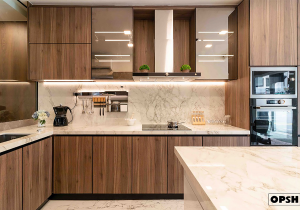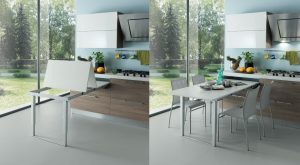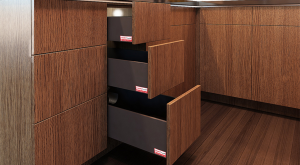Featured Post
Lighting Basics for a Welcoming Home
Lighting plays an essential role in establishing the atmosphere of your home. The right lighting can create warmth, highlight design elements, and improve functionality across all spaces. In this article, we will delve into the basics of lighting—how to choose the right types, layer them effectively, and the best practices for each room in your home.
Understanding Types of Lighting
Lighting can generally be categorized into three main types:
-
Ambient Lighting: This is the overall illumination that fills up a space, making it bright enough for general activities. It often comes from ceiling fixtures or wall-mounted lights.
-
Task Lighting: This type of lighting is focused on specific tasks such as reading, cooking, or working. It usually comes from table lamps, under-cabinet lighting, or desk lamps.
-
Accent Lighting: Accent lighting is used to highlight particular features in your home, such as artwork, plants, or architectural details. This can include spotlighting, track lighting, or wall-mounted fixtures.
A well-lit home incorporates all three types to create a balanced and inviting atmosphere.
Example of Lighting in a Living Room
Imagine a cozy living room: ambient light floods the space from a stylish central ceiling fixture, while a floor lamp beside the reading chair offers task lighting. Accentuating the beauty of your wall art can be achieved through wall sconces that serve as accent lighting. This blend creates warmth, comfort, and a visually appealing setting.
Layering Lighting
Layering lighting is vital for achieving a welcoming atmosphere in your home. Here’s a simple guide:
-
Start with Ambient Lighting: Establish your base with overhead light sources that provide overall visibility.
-
Add Task Lighting: Incorporate sources that enhance functionality in key areas. This can include lamps in workspaces or under-cabinet lighting in kitchens.
-
Incorporate Accent Lighting: Finally, finish off with decorative lights that draw attention to features you love, like sculptures or decorative shelves.
This layered approach allows you to control mood and ambiance effectively.
Kitchen Lighting Example
In the kitchen, let’s say you install recessed ceiling lights for ambient lighting. Under-cabinet lights would provide targeted illumination for your food prep areas. Add pendant lights over the kitchen island to serve both task and accent purposes—functional and stylish!
Choosing the Right Light Bulbs
Selecting the right light bulbs can significantly impact the feel of your rooms. Consider these two main factors:
-
Color Temperature: This is measured in Kelvin (K). Lower numbers (2700K-3000K) emit a warm, cozy glow, while higher numbers (3500K-5000K) produce cooler, brighter light. For a welcoming home, bulbs in the 2700K-3000K range are ideal.
-
Brightness: Brightness is measured in lumens. A general tip is to aim for 100-200 lumens per square meter for ambient lighting. Always consider how each room will be used when choosing bulbs.
Room-Specific Lighting Tips
Living Room
In your living room, aim for versatility. Use a combination of ambient, task, and accent lighting. Dimmable lights are a great addition that allows for mood adjustments, whether you're hosting friends or enjoying a film night.
Kitchen
Prioritize task lighting above countertops and cooking areas, while also ensuring ambient lighting fills the space. Don’t forget accent lighting—perhaps a decorative fixture that enhances the overall aesthetic.
Bedroom
To create a peaceful sanctuary in the bedroom, focus on warm, soft lighting. Bedside lamps for reading along with dimmable overhead lights can create an inviting atmosphere conducive to relaxation.
Dining Room
Utilize a statement chandelier as your primary light source, doubling as both ambient and accent lighting. Additional wall sconces can increase layers in your dining area.
Lighting Considerations for First-Time Buyers
As a first-time homeowner, incorporating effective lighting solutions is critical. When designing your new space, effective lighting enhances both functionality and visual appeal. A well-illuminated room will not only look beautiful but also feel more inviting.
Furniture Considerations
When shopping for furniture, consider how your choices will interact with your lighting. For example, if you choose a dark bar stool, ensure there are adequate light sources nearby for functionality. A well-lit kitchen island equipped with pendant lights can beautifully complement your choice of bar stools.
Image 1:
Prompt: A warm and inviting living room showcasing various types of lighting.
Alt Text: A cozy living room with ambient, task, and accent lighting creating a balanced atmosphere.
Image 2:
Prompt: A kitchen displaying under-cabinet and pendant lighting.
Alt Text: A bright kitchen featuring recessed lights, under-cabinet lighting, and stylish pendant fixtures above the island.
Image 3:
Prompt: A serene bedroom with bedside lamps and a dimmable ceiling light.
Alt Text: A relaxing bedroom illuminated with soft, warm lights from bedside lamps and a dimmable overhead fixture.
External Sources
To enhance your knowledge further, check out these reputable sources: - Lighting Research Center: Understanding Lighting Basics - American Lighting Association: Essential Lighting Tips These resources can provide additional insights into the world of lighting and its impact on home design.
Conclusion
In conclusion, light is an essential element that significantly influences the atmosphere of your home. By understanding the types of lighting, effectively layering them, and selecting appropriate bulbs, you can create a beautifully inviting and practical space. Remember, lighting plays a crucial role when designing each room and selecting furniture—ensuring a harmonious and welcoming environment.
Read More
For further informative explorations, consider these readings: - "How to Choose the Right Light Bulbs for Your Home" - "Lighting Design Ideas for Small Spaces" - "The Impact of Lighting on Mood and Productivity"









